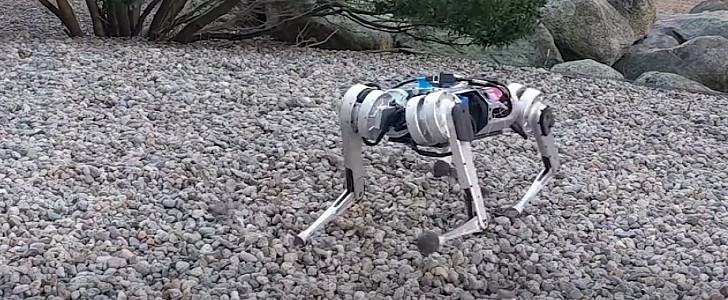Four-legged robots have come a long way in the last decade. We've seen them learn to walk, jump and even climb stairs. While these are all impressive tasks that these robotic systems have successfully mastered over the years, running at high speeds still proves to be slightly harder to achieve. But MIT's mini cheetah robots did it – on different types of terrain too.
When walking slowly, a robot has enough time to analyze and process its environment, and it can predict the next steps with ease. However, sprinting is a different story. This action pushes the hardware's limits by making the motors operate at their maximum torque output. Moreover, the system needs to adapt much faster to its surroundings and type of terrain.
Researchers from Improbable AI Lab at MIT, which is part of the Computer Science and Artificial Intelligence Laboratory (CSAIL), have been trying to give their mini cheetah robots the ability to sprint. And they did not only succeed in that, but they also enabled the robots to adapt to different surfaces, such as ice, gravel, or grass.
To make a robot capable of adapting to its surroundings as it runs involves fast detection of changes in the terrain. The machine must also decide its next step quite fast in order to avoid falling. The MIT researchers explain that programming a robot's behavior in every potential situation that might occur is challenging and it's time-consuming.
That's because a human engineer has to intervene whenever the robot encounters an issue and cannot move on a specific type of terrain – the engineer has to search for the cause of the failure and manually adjust the robot controller.
Learning through trial and error eliminates the need for a human to define how the robot should respond in every scenario. Using this learning-based method, MIT's cheetahs are teaching themselves to run in a simulator, and they can gain experience much faster.
To date, researchers have successfully tested the robot in a real-life environment, and the machine achieved a speed of 8.7 mph (14 kph). It Looks slightly drunk when running, but nonetheless, it gets the job done. Take a look at the clip down below to see the mini cheetah in action.
Researchers from Improbable AI Lab at MIT, which is part of the Computer Science and Artificial Intelligence Laboratory (CSAIL), have been trying to give their mini cheetah robots the ability to sprint. And they did not only succeed in that, but they also enabled the robots to adapt to different surfaces, such as ice, gravel, or grass.
To make a robot capable of adapting to its surroundings as it runs involves fast detection of changes in the terrain. The machine must also decide its next step quite fast in order to avoid falling. The MIT researchers explain that programming a robot's behavior in every potential situation that might occur is challenging and it's time-consuming.
That's because a human engineer has to intervene whenever the robot encounters an issue and cannot move on a specific type of terrain – the engineer has to search for the cause of the failure and manually adjust the robot controller.
Learning through trial and error eliminates the need for a human to define how the robot should respond in every scenario. Using this learning-based method, MIT's cheetahs are teaching themselves to run in a simulator, and they can gain experience much faster.
To date, researchers have successfully tested the robot in a real-life environment, and the machine achieved a speed of 8.7 mph (14 kph). It Looks slightly drunk when running, but nonetheless, it gets the job done. Take a look at the clip down below to see the mini cheetah in action.







